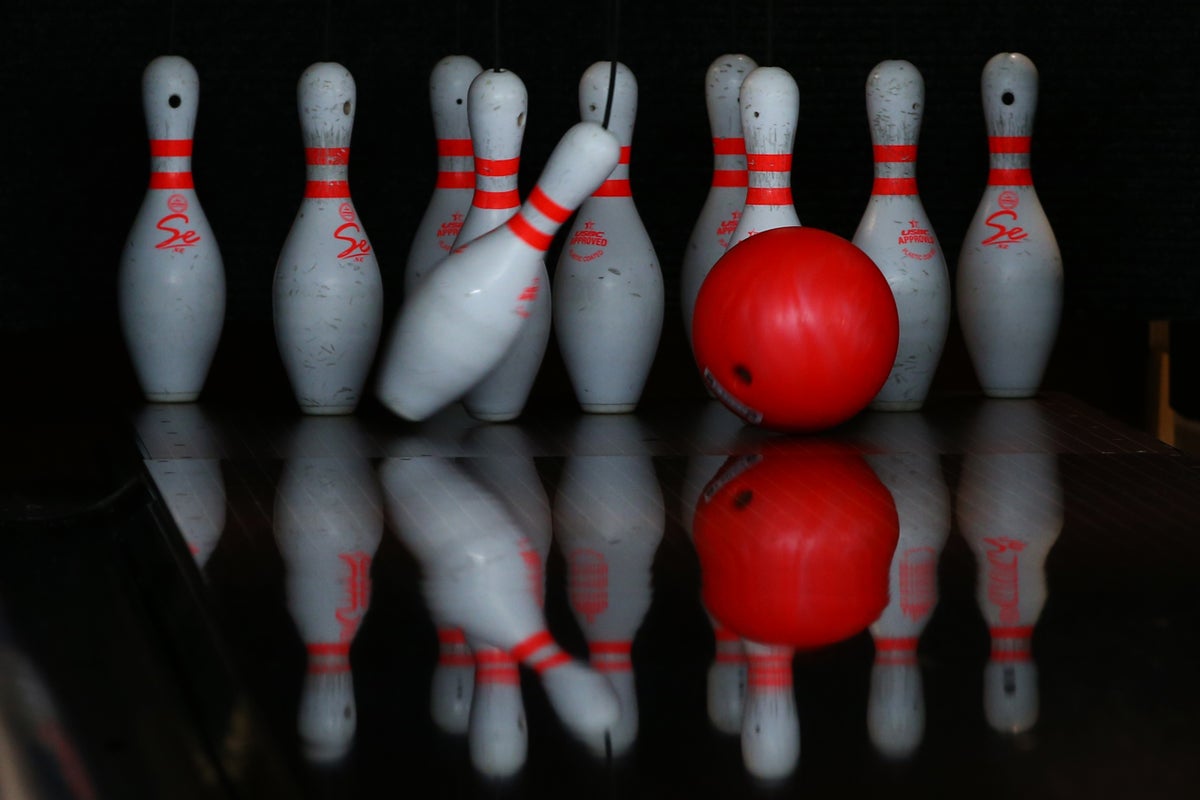The secret to scoring the perfect strike in a round of ten-pin bowling has been unlocked, according to a multinational team of scientists.
Using a set of complex differential equations, first developed by 18th-century polymath Leonhard Euler, the researchers ran simulations to work out the optimal bowling strategy, accounting for factors ranging from spin and friction to oil patterns on the boards.
And the findings could have implications for competitive bowling at the highest levels of the sport.
Physicists and engineers from Loughborough University and a number of American universities worked together on the research project, which was published in the journal AIP Advances. They based their simulations on the bowling style of a hypothetical “average” bowler, releasing the ball at 17.9 mph at a 45-degree angle with a 416 rpm spin rate.
“Bowling ball movement is surprisingly challenging to model,” said Simon Ji, of Princeton University in New Jersey, noting that friction conditions and ball weights vary widely from alley to alley. However, he added, their models had shown “very realistic ball behaviour, and were verified by several professional players and coaches”.

The researchers also paid particular attention to the impact of oil patterns on strike chance. “In competitive bowling, oil is applied to the lanes in patterns specifically designed to create challenging friction profiles,” they noted, examining the conditions of oil patterns used in current bowling tournaments down to the most minute detail.
Based on these models, the authors found that the best strategy would be to release the ball at the 28th board from the left, at 1.8 degrees to the right of a straight line. This will allow the ball to take a curved path, the most effective route to scoring a strike, while also allowing for a substantial margin of error – as they note, “in real life, no bowler can hit their target with 100% accuracy.”
The optimal shot described in the study would work for a particular bowler, launching a ball onto a particular oil pattern – but the models, the researchers say, could be applied for different players in a range of scenarios.
The authors hope that their research might be put to practical use in the field of competitive bowling, which has seen particular renewed interest in the UK in recent years. The number of tenpin lanes has reached a record 5,700, and the largest national bowling alley operator, Hollywood Bowl, enjoyed unprecedented sales of £230 million last year.
“The simulation model we created could become a useful tool for players, coaches, equipment companies and tournament designers,” said Dr Curtis Hooper, of Loughborough University.
Mr Ji said, “We are already in contact with several well-known coaches in the field, and hope to tailor our simulations to better fit their needs in the near future.”



